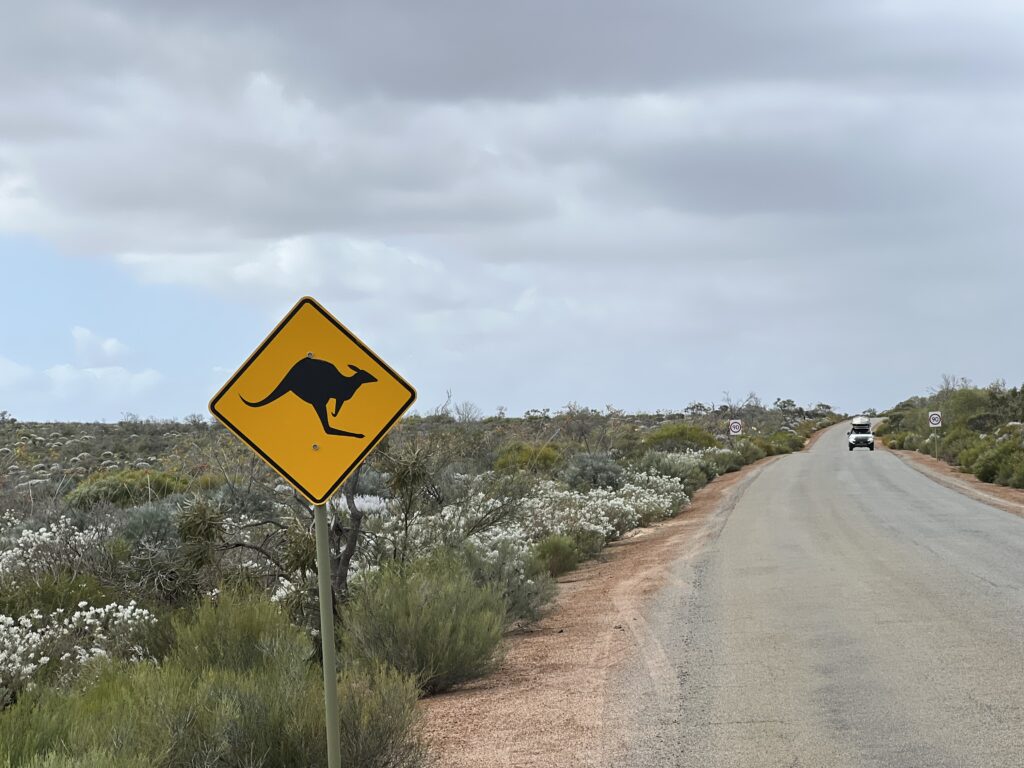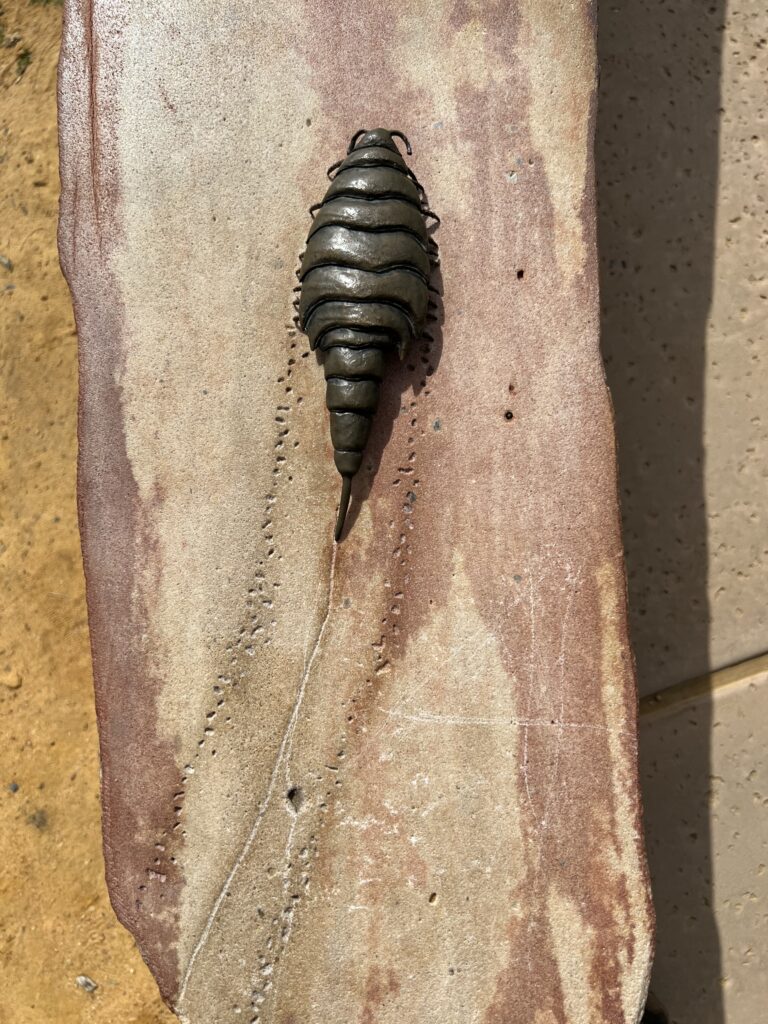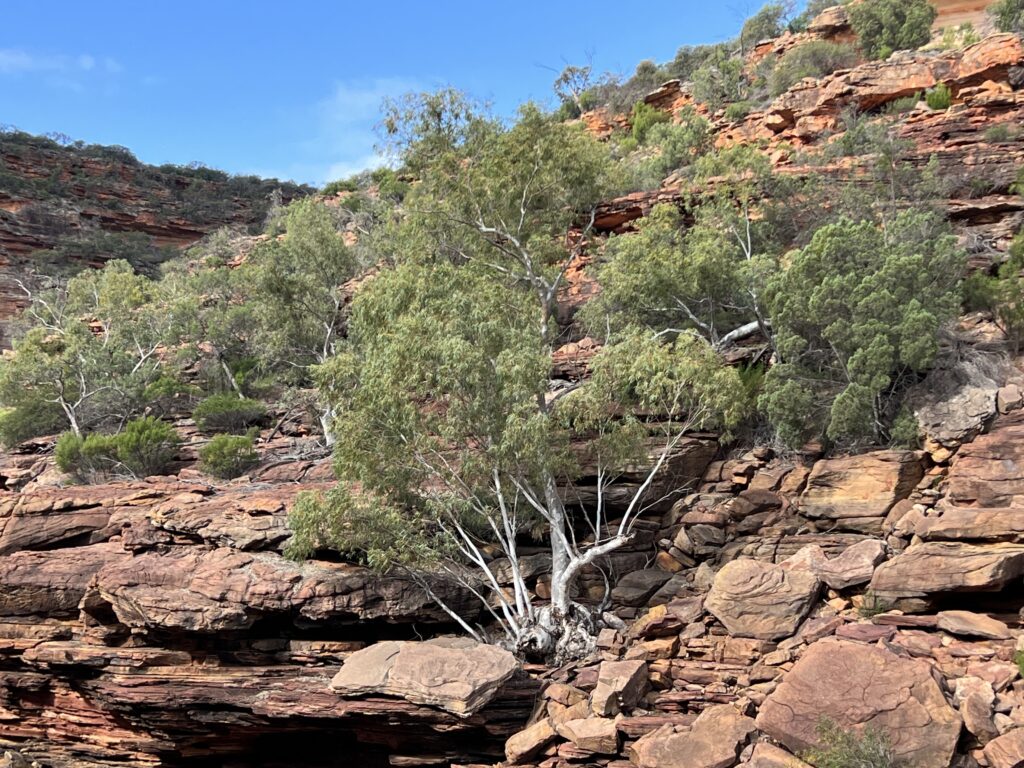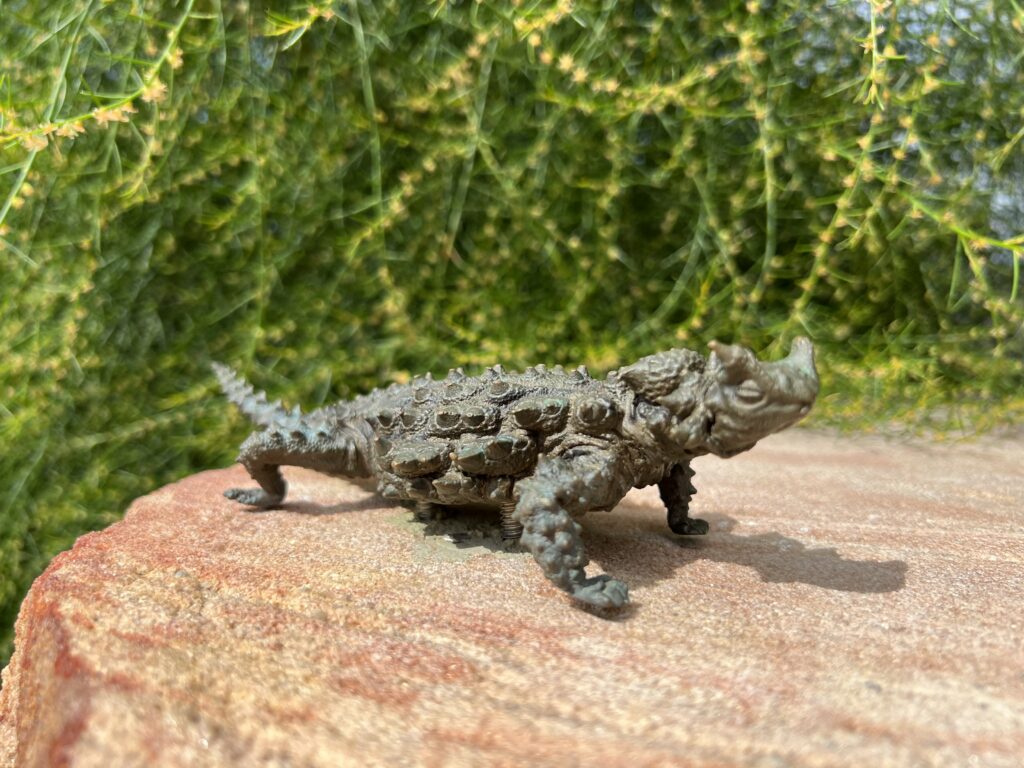19 September. This morning we have breakfast at the Dome, in Geraldton, and the coffee and cake taste delicious. Then is back on the road. We are headed to Kalbarri National Park, looking for more bees and buzz pollinated flowers. We pass the sleepy town of Northampton, and enter the vast expanse of Kalbarri. The straight road cuts through some beautiful areas if wild bush, and the floral wonders continue appearing right and left. The morning is stormy and very windy, and there are no bees flying about. Even the pesky flies, that bane that is not mentioned to tourists but is well known to locals, are unable to take off on the windy conditions and leave us alone for a while.

On the road, an unlucky emu, a large flightless bird almost as big as an ostrich, crosses in front of a caravan coming on the opposite direction and sadly doesn’t make it. We stop but there is nothing to do with the poor animal. we note the mileage and will report it at the rangers station at the entrance of the park. the drive has taken a few hours, and the stops to check for bees means that we arrive at the park gates late in the afternoon. David and I decide to go for a short walk to the Sky Walk and Z bend.

The Sky Walk is a metallic structure that hangs high above the gorge that cuts deep into the meandering Murchison river valley. We enjoy beautiful views of the river and valley below, and we look for rock wallabies and red kangaroos, but without luck. we then drive to the Z bend and take a walk on the moist environment that exists among the cracks and crevices of the red rock as we descend towards the river. a few honeybees buzz around, but no native bees. Rain and sun mix as we walk down to reach the Murchison river among spectacular views of the red rock walls. Tortuous Eucalyptus sprung from crevices and thick, fat trunks at their base store resources that allow them to resprout and regenerate after fire. The path is relatively quiet and we are the last hikers to leave the Z bend walk in the dying afternoon. The right angles path that the river follows here is caused by deep cracks on the mother rock that have been carved for ages. When we walk up we see the fossil tracks of eurypterids, sea scorpions that hunted the waters and begun taking their first steps on dry land 400 million years ago, and find a very interesting species of heterantherous and enantiostylous Senna that appears common at the top of the valley. But no bees or rock wallabies here either.

We leave the park and go to Kalbarri town where we stay at the Caravan Park and eat fish tacos.
This night we stay up until late processing bee samples collected in the previous days. We photograph each specimen for later measurements and identification. The flash of the camera inside the caravan past midnight must be strange for other campers. We have found some amazing bees and the macro photos barely do justice to these beautiful buzzing bees. Tomorrow we will continue exploring the Kalbarri bush, hoping to find more bees.
